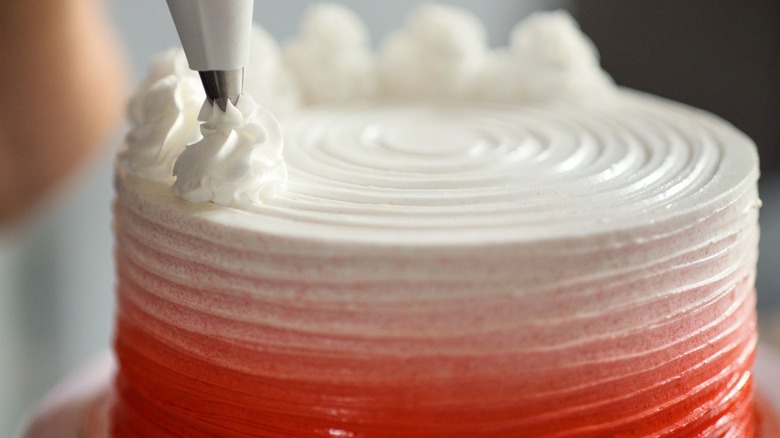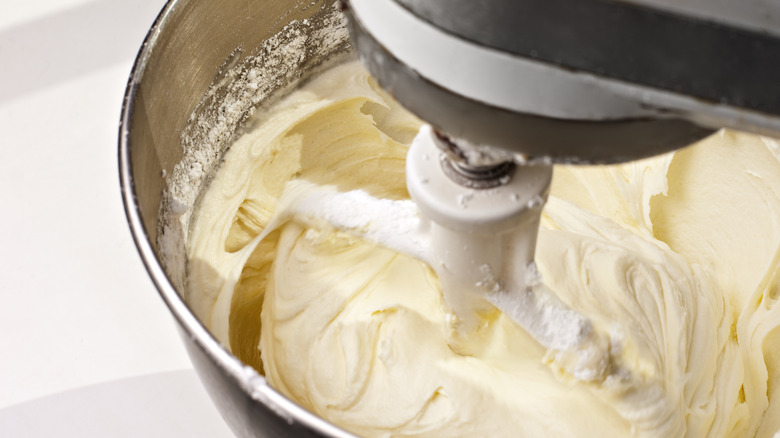It's Easier Than You Think To Fix Curdled Swiss Buttercream
Buttercream is an essential skill for bakers. What's a more classic and delicious icing for your freshly baked cake? While most buttercream is fairly simple to make, Swiss buttercream takes it to the next level, by using meringue. The ingredients aren't complicated, but nailing the technique can be in order to get that perfect, smooth, stable, and yet spreadable buttercream. Even if you've followed all the steps to a tee, it's not uncommon to still find yourself with a broken or curdled buttercream at the end of it.
The good news is that broken buttercreams, even Swiss buttercream, are fairly easy to fix. What it all comes down to is temperature. A Swiss buttercream that's too warm will be loose and unstable, more like a sweet sauce than an icing. One with ingredients that are too cold will be broken, chunky, or curdled. Thankfully, both of these problems have quick and easy solutions. You need to bring the icing to an even temperature throughout. So if it's too warm, pop it in the fridge for about 10 minutes, or until it stabilizes, then remove from the fridge and whisk it again. If the buttercream is too cold and chunky, even out the temperature by constantly stirring it in a double boiler over a pot of steaming water until it comes together in a smooth and stable mixture.
How to get stable swiss buttercream from the start
With a meringue as the base, it's understandable that Swiss buttercream can be tricky to get right from the start. But with the right techniques and a little practice, you'll become a Swiss buttercream master in no time. One of the keys to perfect Swiss buttercream is to nail the meringue. Meringues can be finicky and they don't like fat, so be extra careful when separating your eggs to make sure not even the tiniest drop of yolk makes it into your whites. This will help ensure you're able to achieve good, stiff peaks before adding your butter.
And like fixing a broken buttercream, getting it right in the first place also requires careful attention to the temperature of your ingredients. Your meringue will still be a bit warm when it's time to mix it together, but you don't want it to be hot. And while you need your butter to incorporate nicely into the mix, if you let it soften completely to room temperature your buttercream may end up too loose and warm, so keep your butter on the cooler side. And remember that even if you don't get it right the first time, a quick fix isn't far off.

